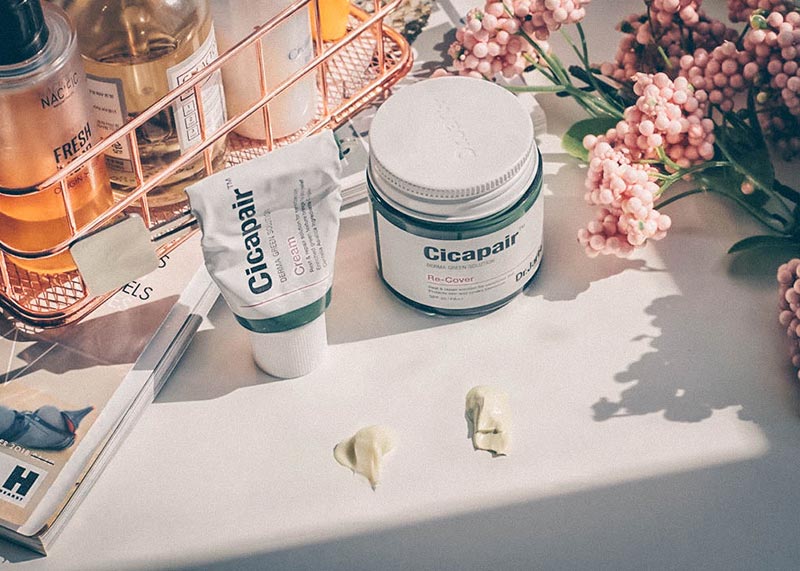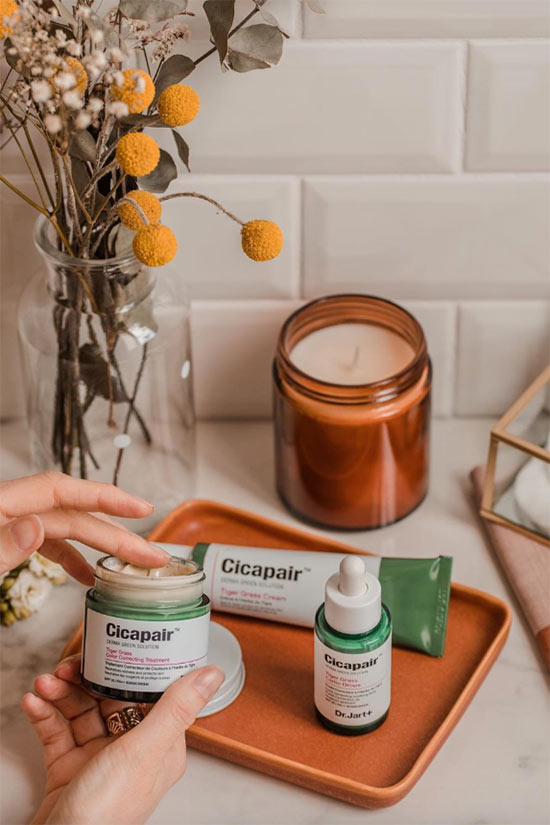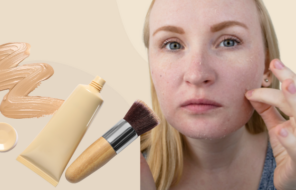Also known as gotu kola, Indian pennywort, cica or tiger grass, centella asiatica extract is gaining traction for its skin-soothing properties. No matter whether your skin is oily, dry or somewhere in between, you might still find yourself suffering from redness or inflammation. This can be situational – summer is here, and maybe you forgot your sunscreen on a particular day, or you might be suffering from a skin condition like rosacea. No matter the reason, centella asiatica extract might be the best thing for clearing your skin from redness.
In this article, we explain what centella asiatica is, exactly, and go over all of the gotu kola benefits. We also address any concerns you might have regarding gotu kola side effects.
In this article:
- What Is Centella Asiatica?
- Centella Asiatica Benefits for Skin
- Does Centella Asiatica Have Side Effects?
What Is Centella Asiatica?
Gotu kola is one of the more common names for centella asiatica, along with tiger grass and cica. This plant is native to Asia, where it is particularly happy in swampy areas. Gotu kola has been used for centuries in traditional Chinese medicine, and over the years its popularity spread to other East Asian and South East Asian countries.
In traditional medicine, centella asiatica has been used as a skin remedy for a variety of skin ailments, from the mildest ones all the way up to leprosy. It is also said to have a revitalizing effect on the nerves and brain cells and to help with emotional disorders.
The main active constituents of centella asiatica are saponins known as asiaticosides, which are unique to the plant. Preliminary research suggests that these asiaticosides have soothing and healing properties, and anecdotally that seems to be true!
In addition to these saponins, centella asiatica extract contains other beneficial compounds like astringent tannins, nourishing amino acids and antioxidant flavonoids.
Centella Asiatica Benefits for Skin
While research is still in its infancy and will likely not progress too much since centella asiatica extract cannot be trademarked, what little studies that have been done so far are promising. Combined with the effects that have been reported by the abundance of people using cica products, it seems as though this natural ingredient has some incredible benefits to the skin, especially of those with sensitive skin.
Soothing
It seems as though there are two ways in which centella asiatica extract is beneficial to those with sensitive skin that can be red, inflamed, irritated, or itchy. The first are the astringent properties of the tannins, which help fight inflammation to reduce swelling, and control itching and pain.
Those with sensitive skin report that using products with centella extract reduced the visible signs of sensitivity in their skin significantly and has also helped with other symptoms like itching or burning.
Repairing
The second way, in which centella asiatica is beneficial to those with sensitive skin, is through healing and regeneration. This happens thanks to the asiaticosides in the centella asiatica extract – especially madecassoside, which is often synthesized from centella asiatica and used on its own. Madecassoside seems to have a regenerating effect on compromised skin, which can help speed up the healing of damage caused by irritation or inflammation.

Anti-Acne
The same soothing and repairing properties that make centella asiatica so great for sensitive skin also make it a wonderful acne treatment. One of the most irritating components of acne is the inflamed pimple. The soothing components of tiger grass can reduce the redness and swelling of breakouts very quickly, while the healing properties can help if the skin had been broken due to picking.
Anti-Aging
Centella asiatica extract contains a lot of flavonoids, which are the same kinds of antioxidants found in green tea. As antioxidants, flavonoids can help neutralize the free radical damage caused by the sun and pollution exposure, leading to more rapid cell death.
The result of this damage is known as extrinsic aging, meaning signs of aging caused by environmental factors rather than genetics. Centella asiatica is a great ingredient for helping to stave off signs of aging, especially if you have sensitive skin.
Does Centella Asiatica Have Side Effects?
As with any natural ingredient, it is possible to be allergic to centella asiatica extract. Allergies are quite rare, but it’s better to be careful.
As such it is a good idea to always be in the habit of patch testing products behind your ear or on your arm for a few days before applying something all over the face. Otherwise, centella asiatica is considered safe when applied topically.

Photos via @alyson_marion, Instagram





